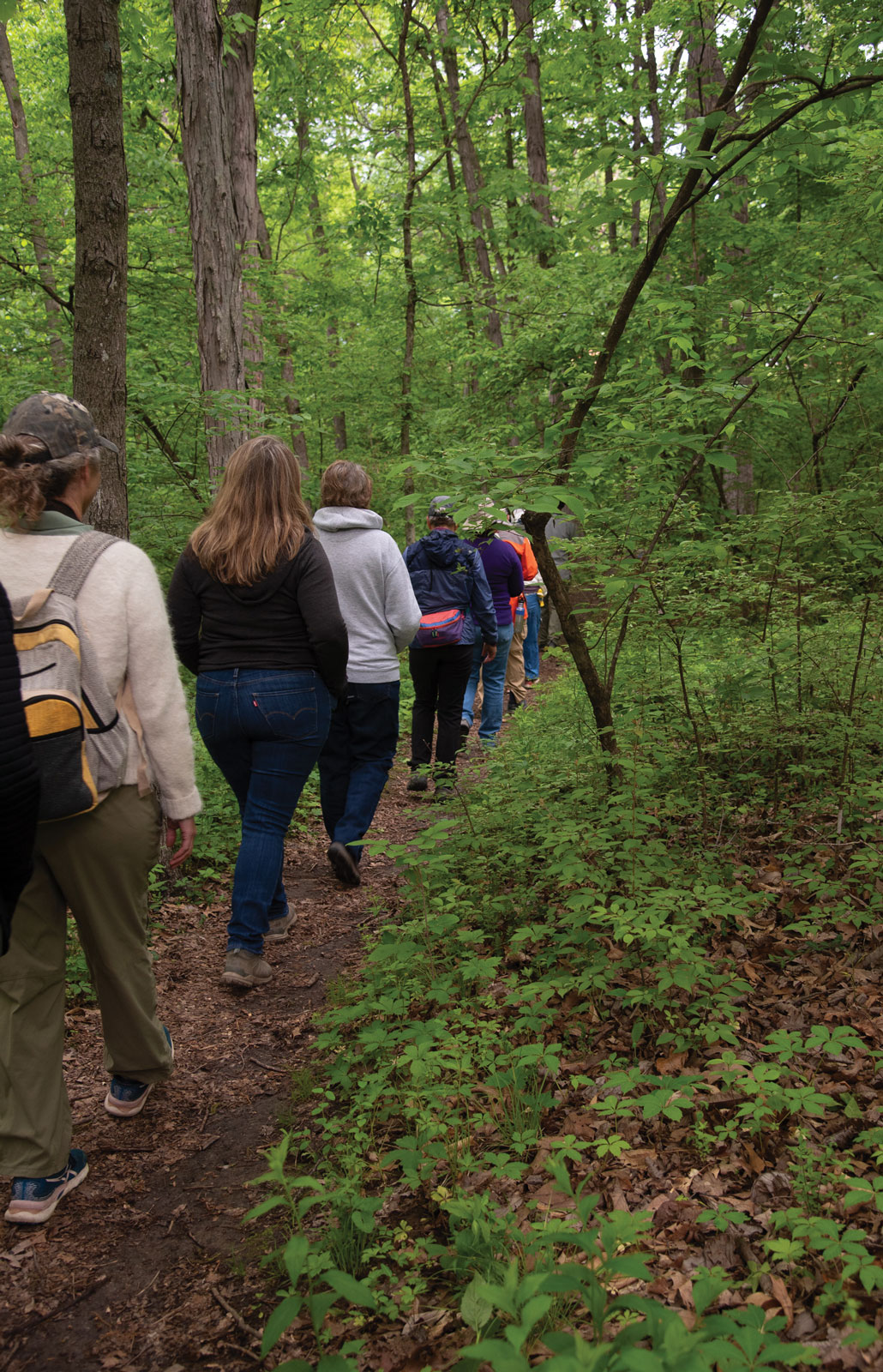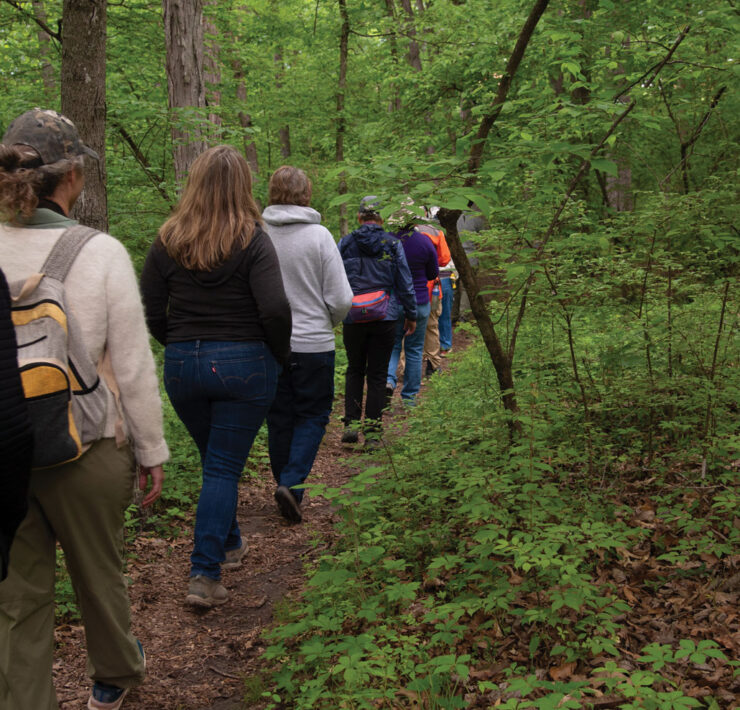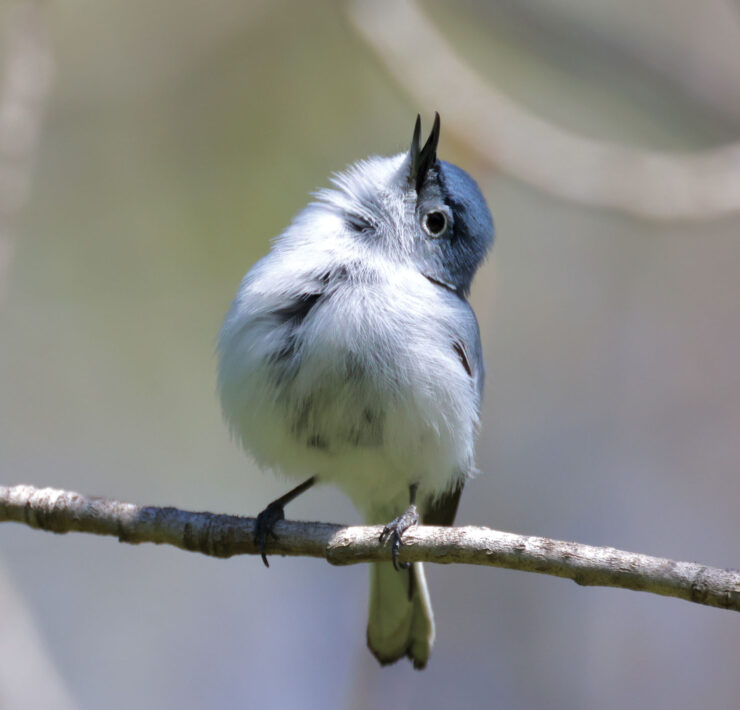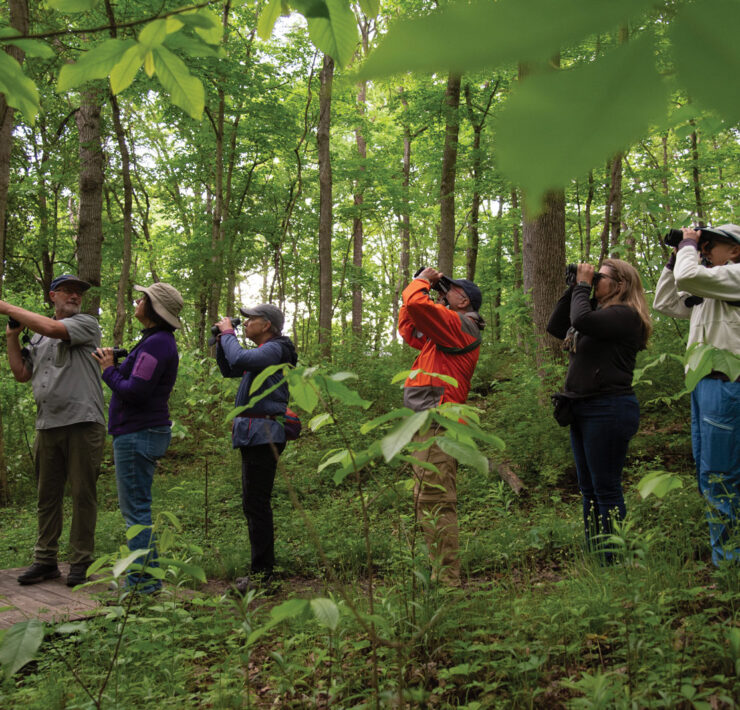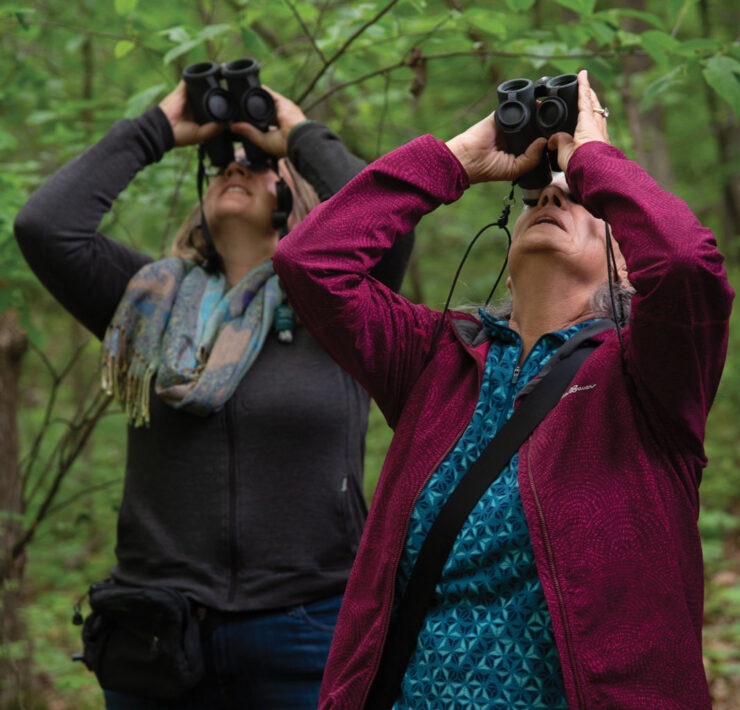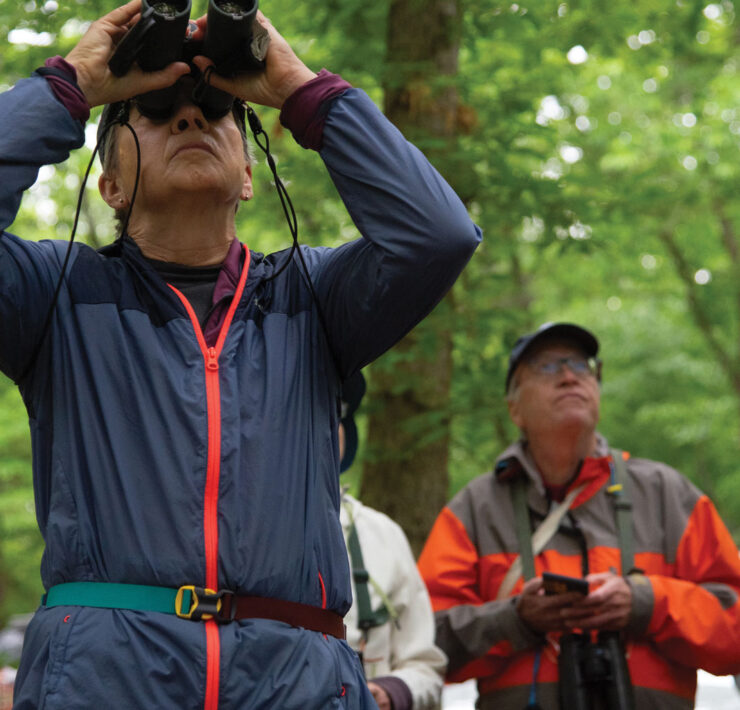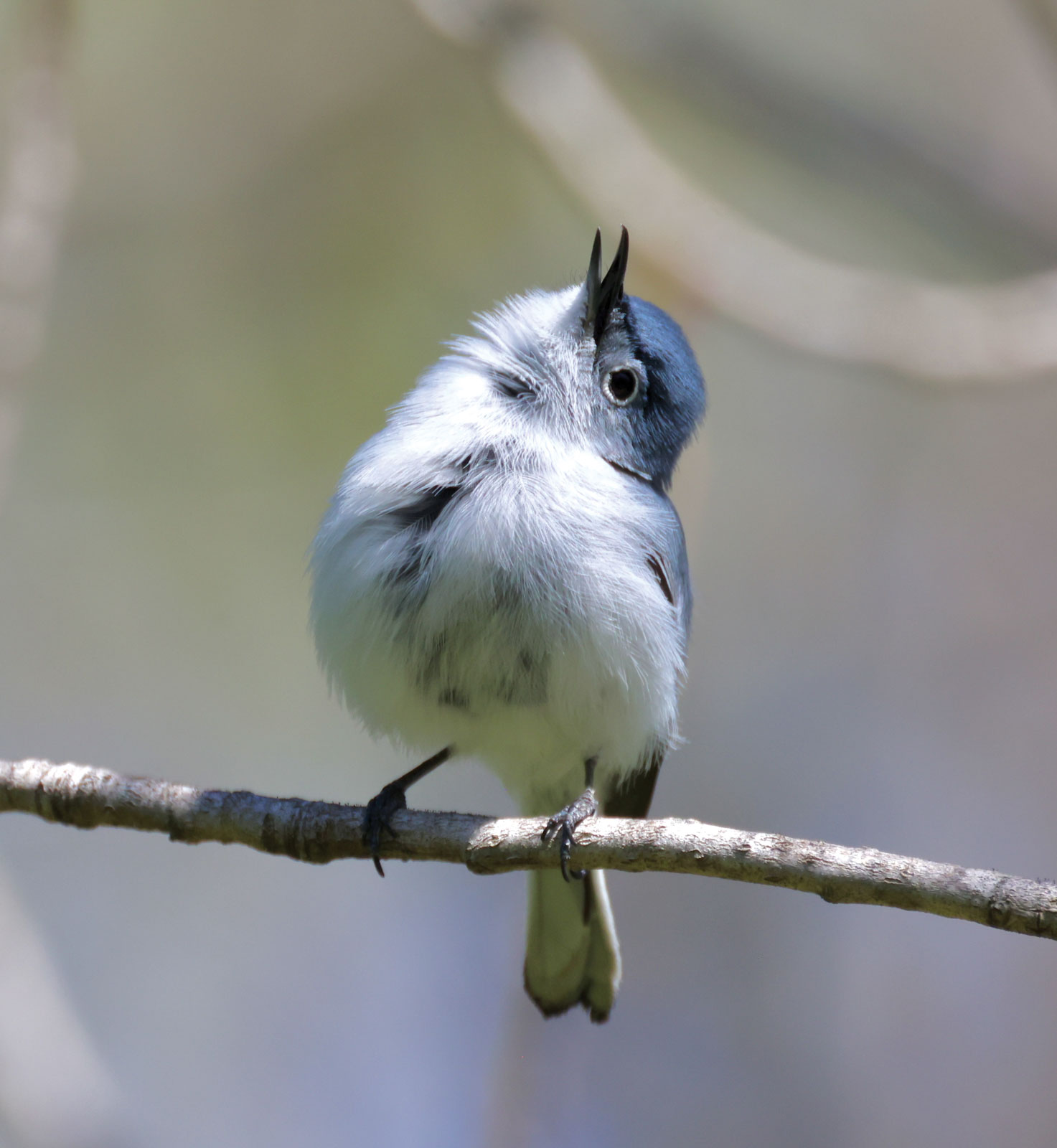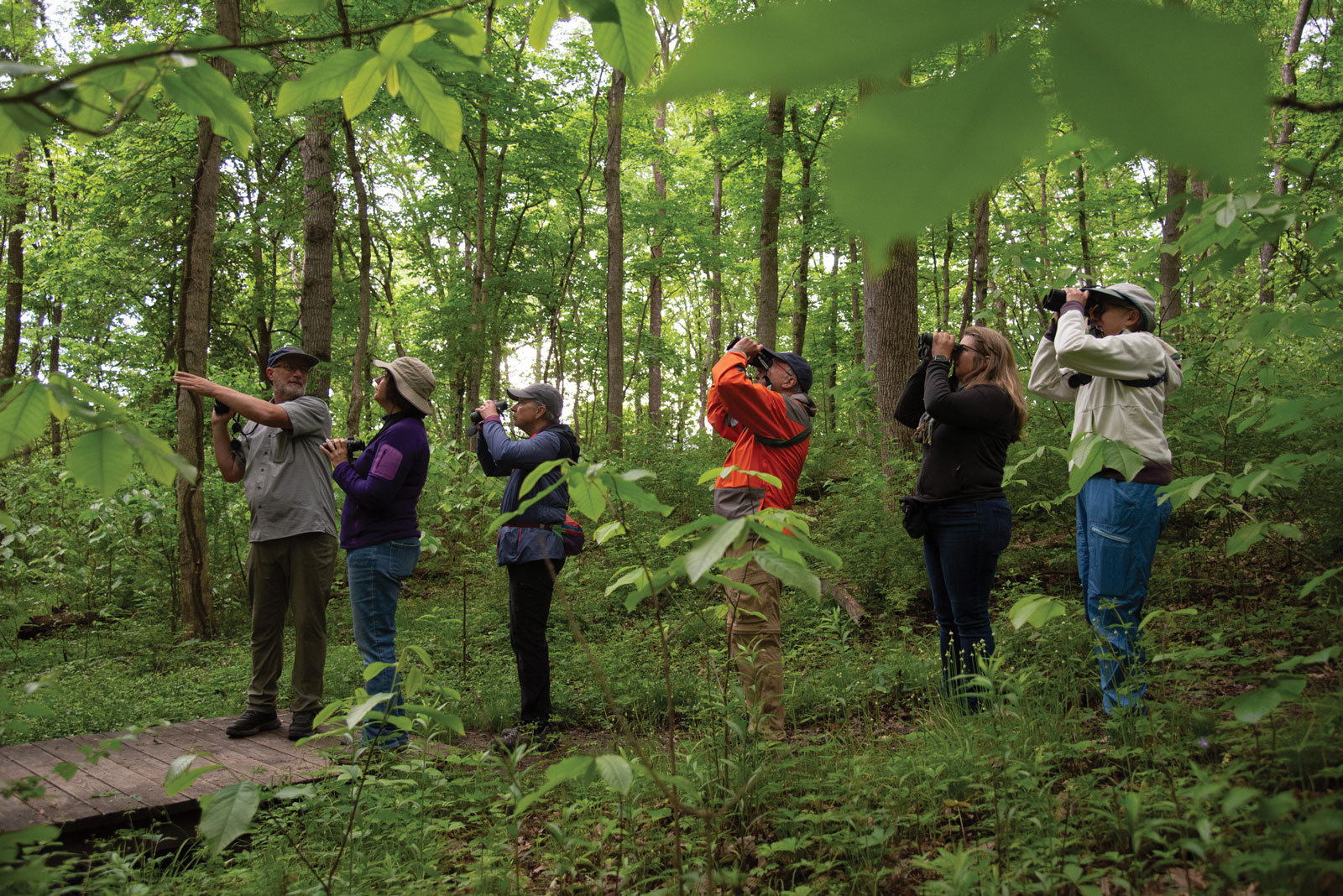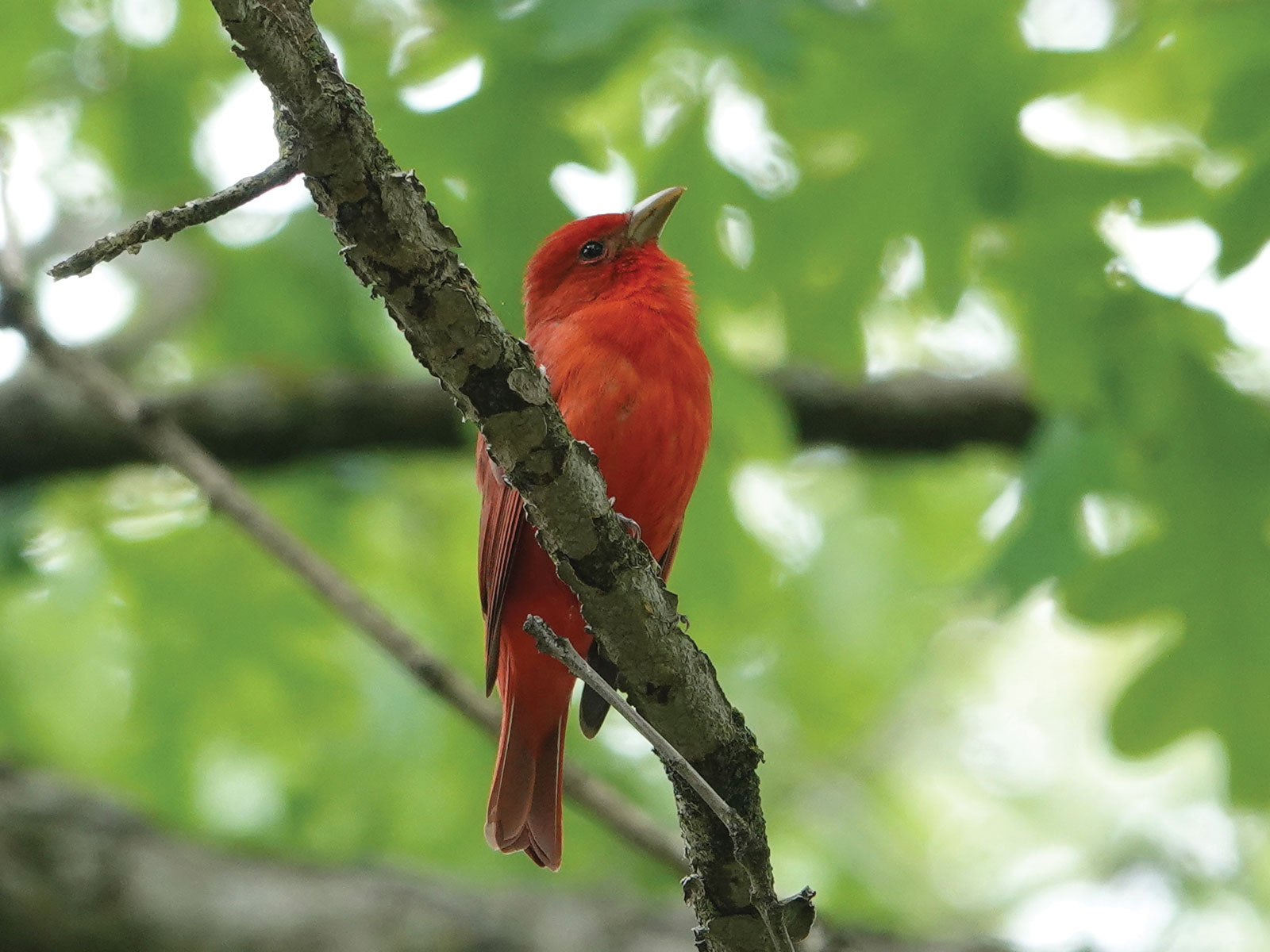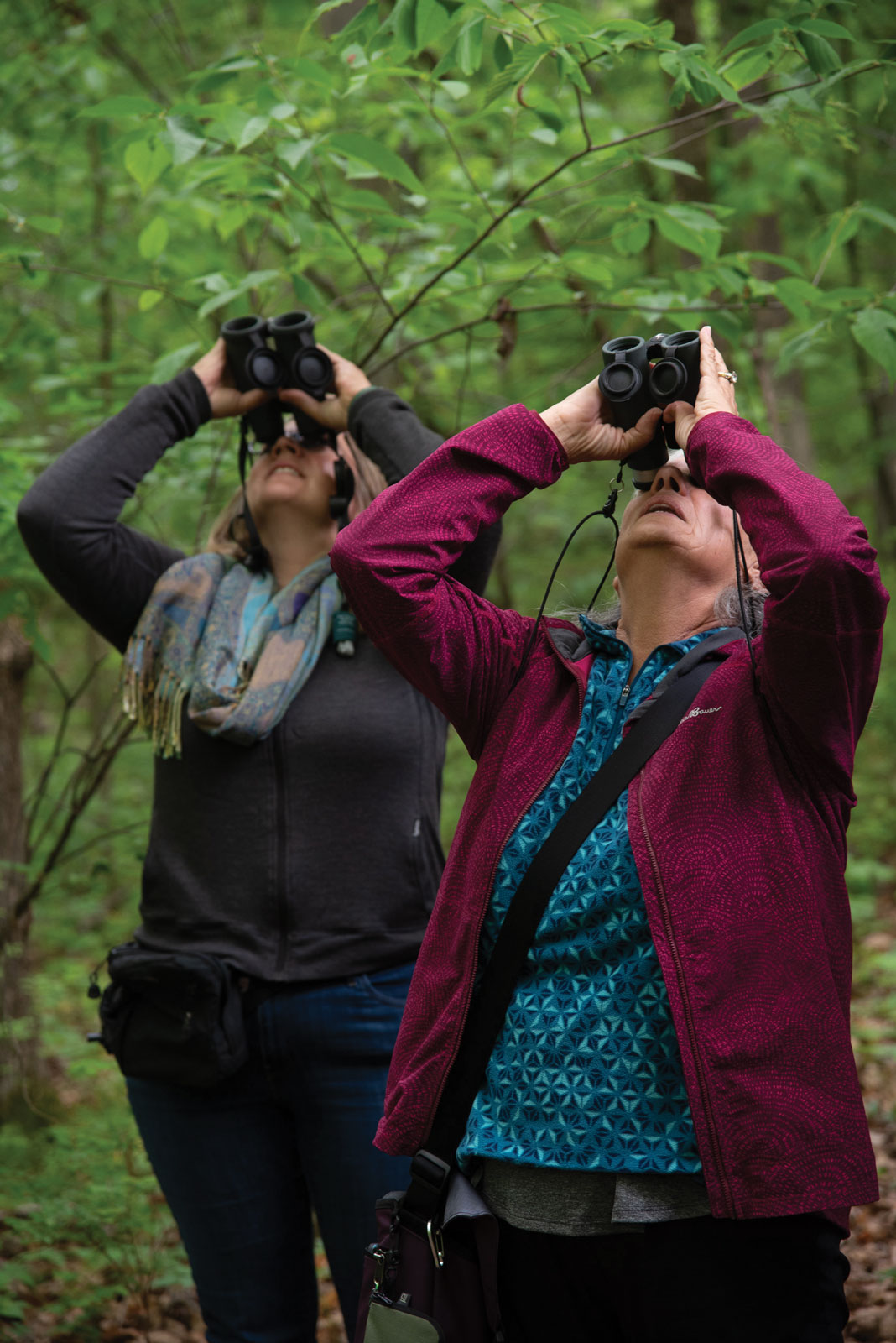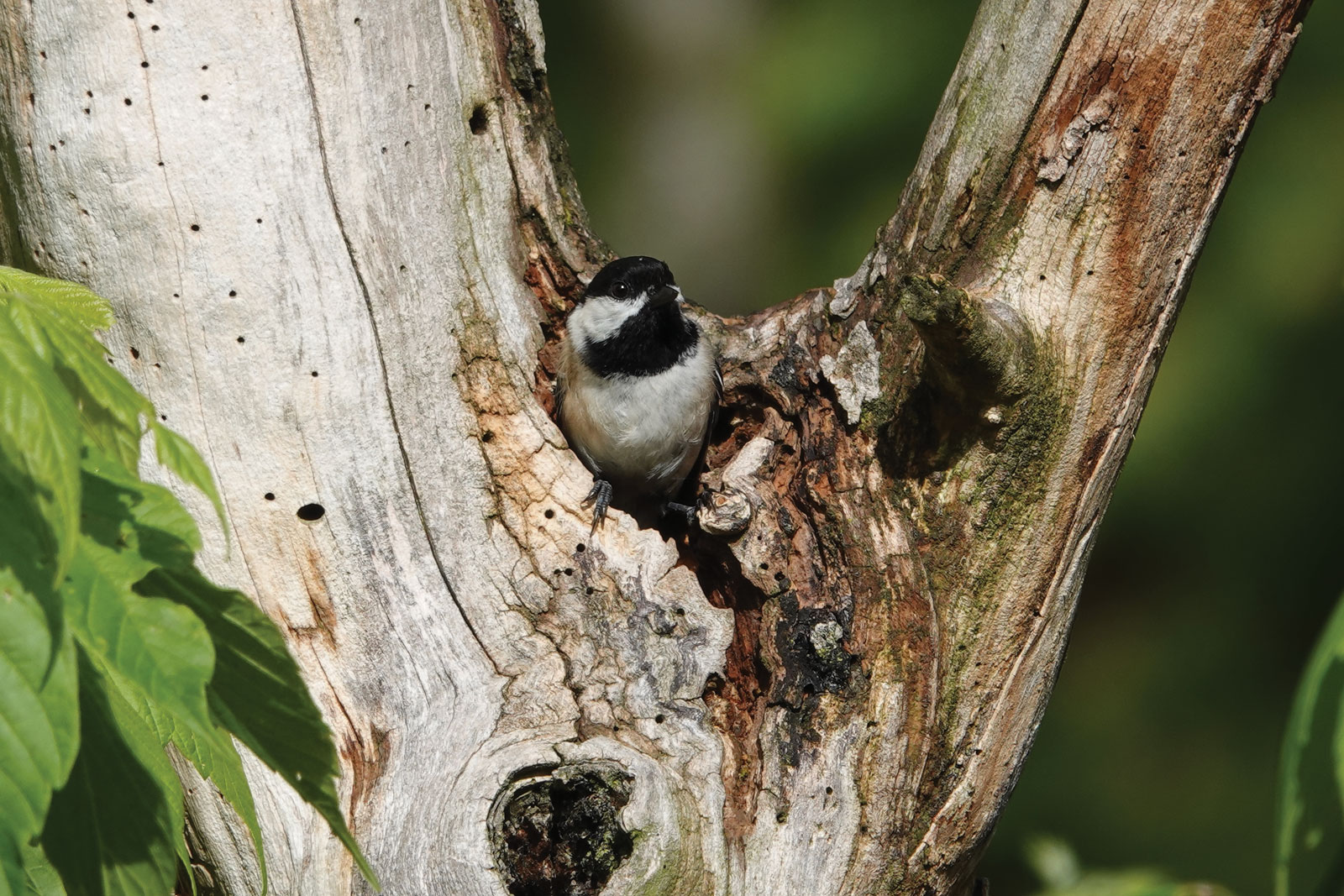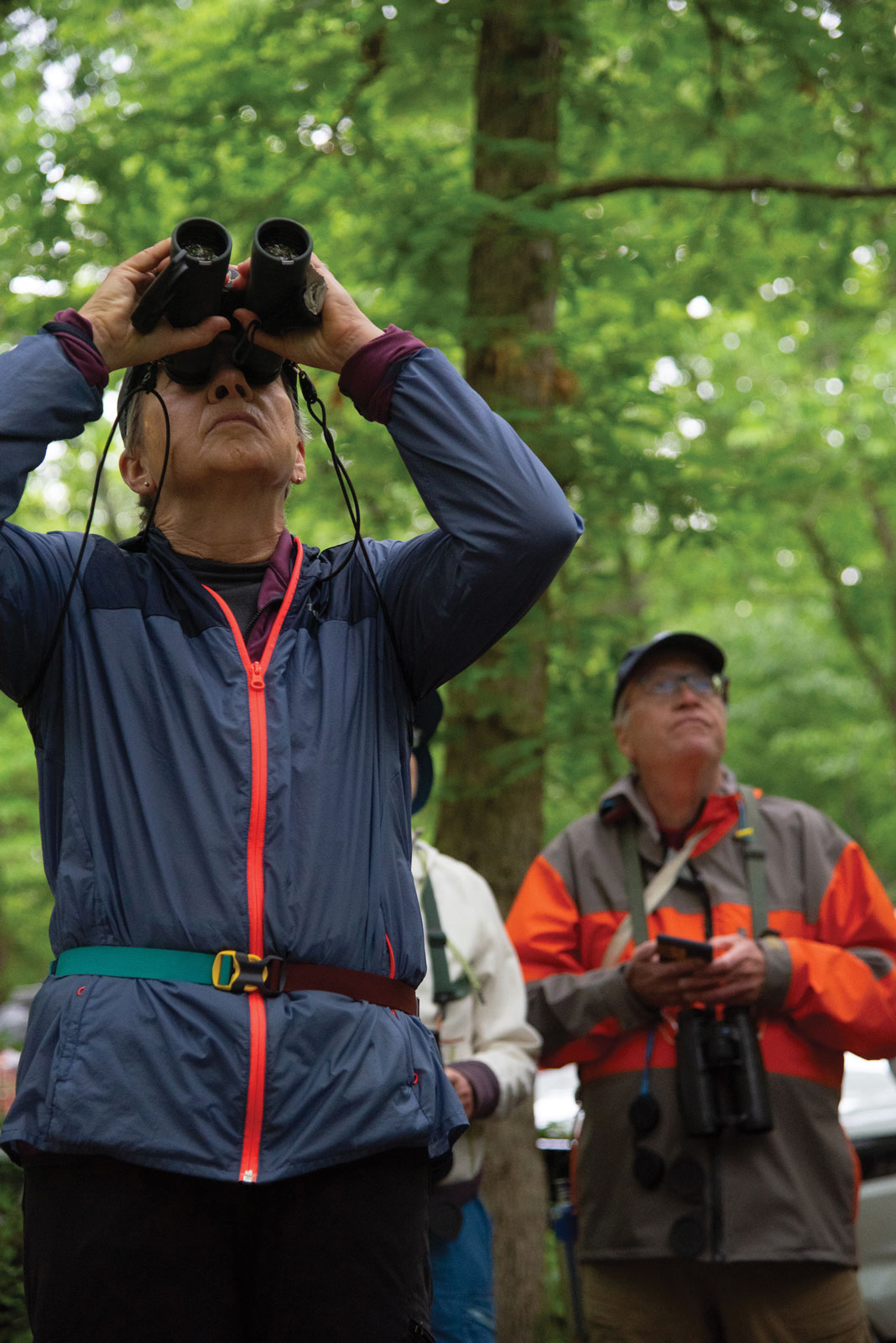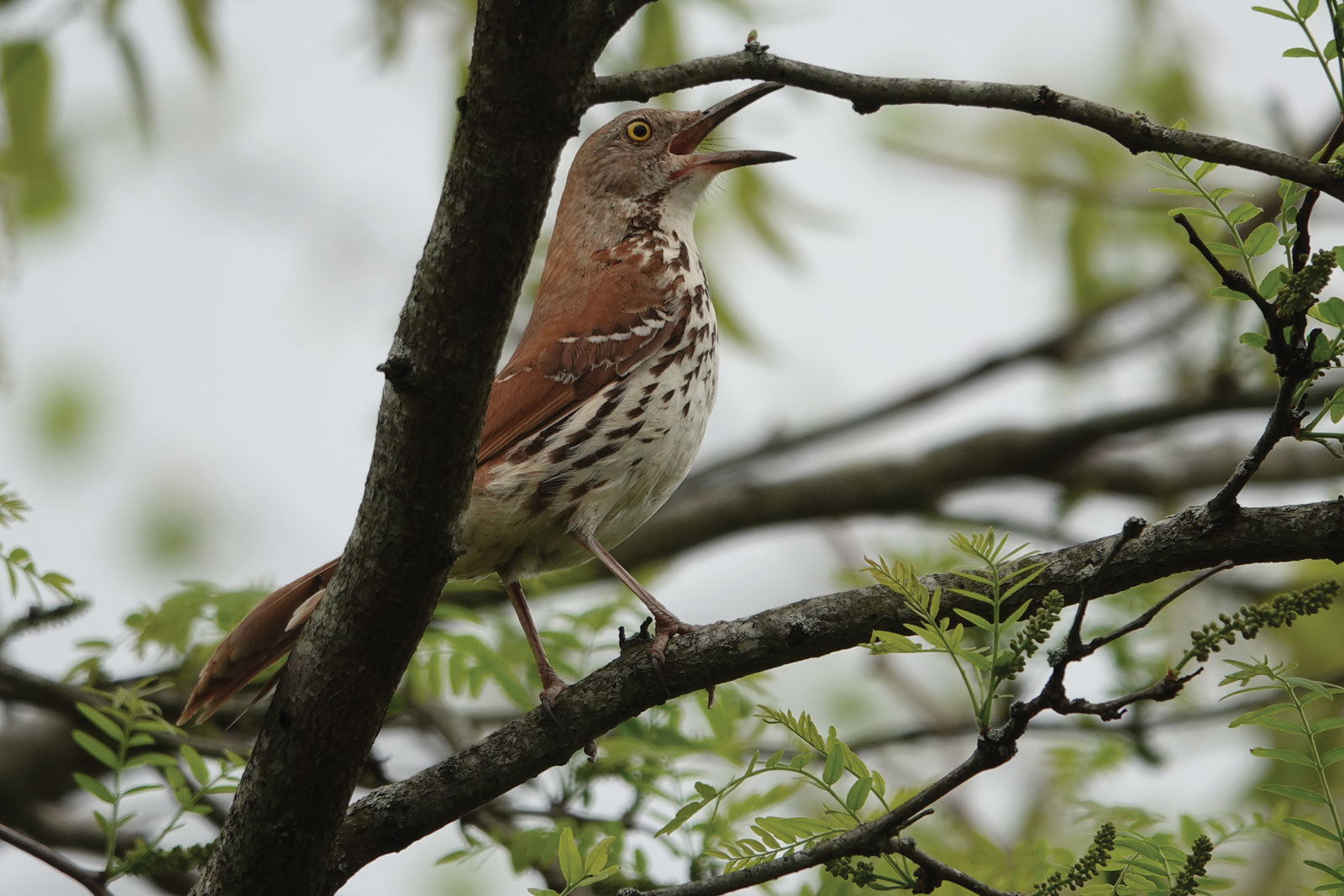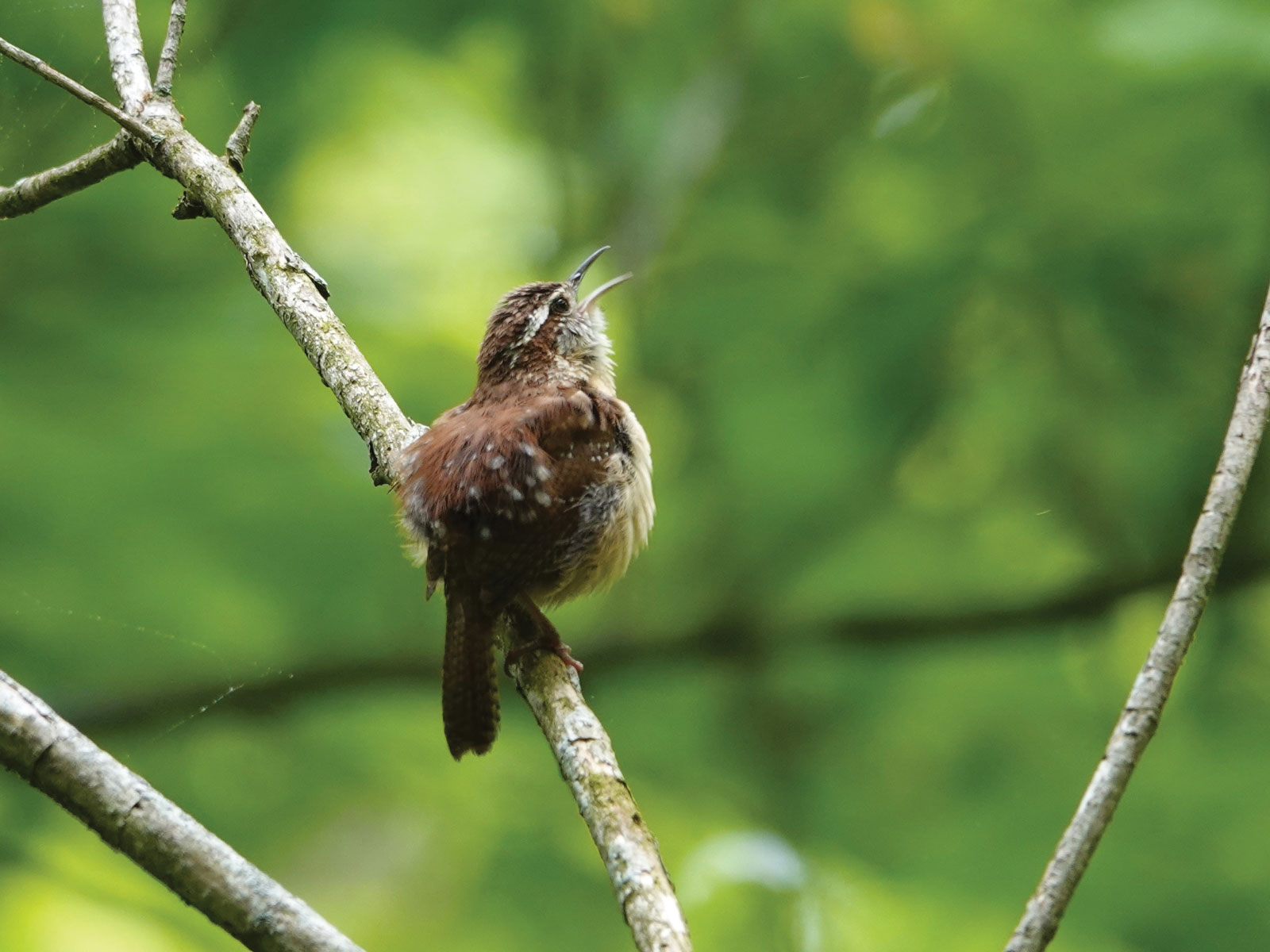Flights of Fancy: Birdwatching in CoMo
- "Flights of Fancy" originally appeared in the June 2024 "Animal" issue of COMO Magazine.
- Photos courtesy of Stephen Bybee, Cheryl Rosenfeld, and Lottie Bushmann
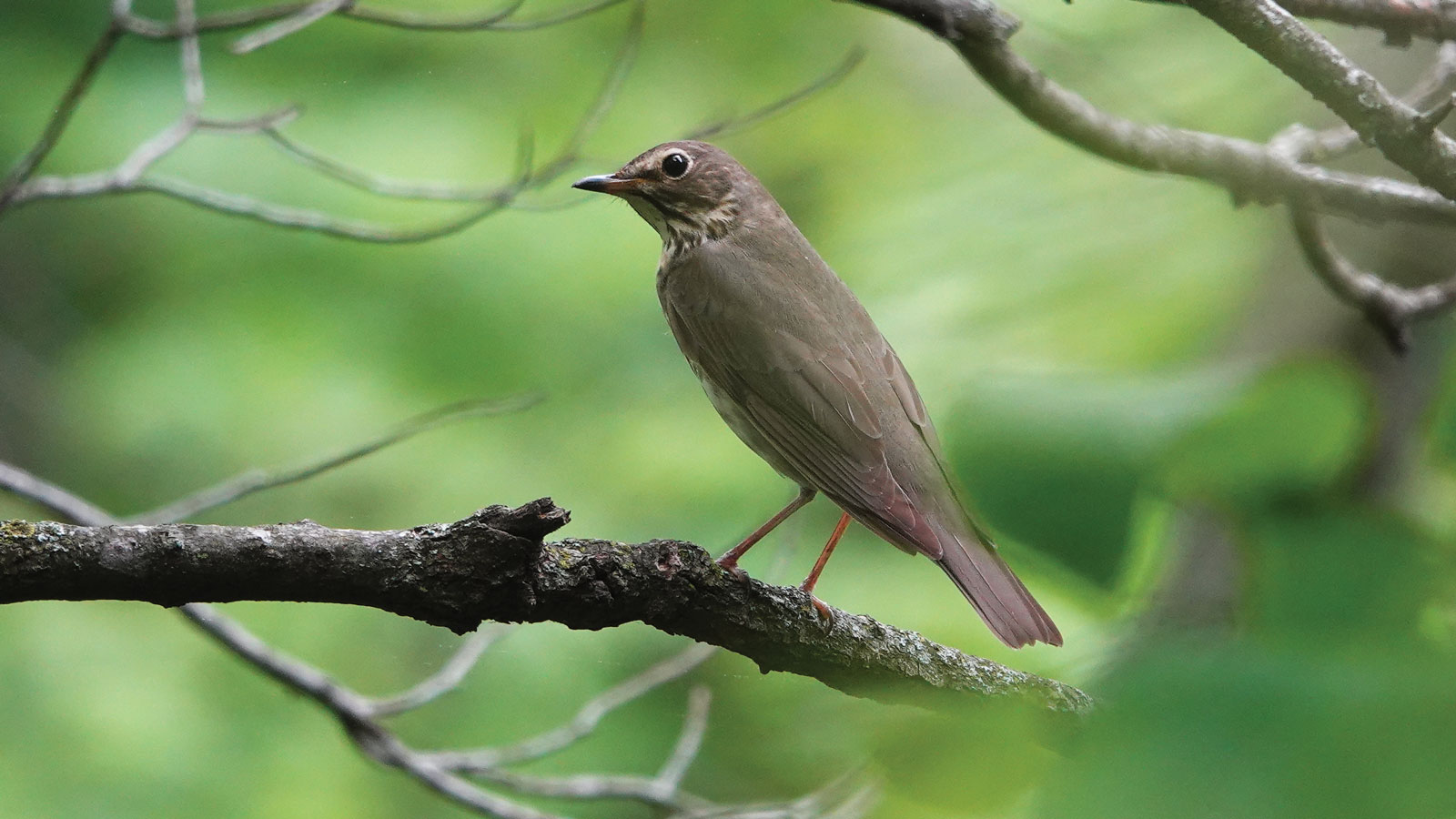
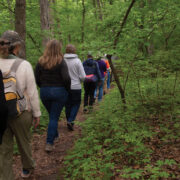
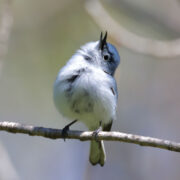
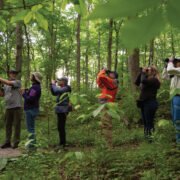
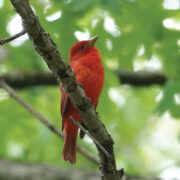 +6
+6 Flights of Fancy: Birdwatching in CoMo
Flights of Fancy: Birdwatching in CoMo
Flights of Fancy: Birdwatching in CoMo
Flights of Fancy: Birdwatching in CoMo
Flights of Fancy: Birdwatching in CoMo
Flights of Fancy: Birdwatching in CoMo
Flights of Fancy: Birdwatching in CoMo
Flights of Fancy: Birdwatching in CoMo
Flights of Fancy: Birdwatching in CoMo
Columbia-area ornithophiles flock together to celebrate our nesting neighbors.
Beneath the verdant canopy that shelters Kiwanis Park on College Park Drive, a group of binoculared birders dot a trail muddied by an unusually wet mid-Missouri May. Necks craned skyward, they listen and look, trading observations in hushed tones that belie their enthusiasm.
Some are newbies looking to explore a potential new hobby — and perhaps test drive a freshly downloaded app on their smartphone. Others are clearly experts, outfitted with weathered gear and good-naturedly debating if they just heard a vireo of the red-eyed or Philadelphia variety.
“This is Shazam for birds,” says Lottie Bushmann, president of the Columbia Audubon Society (CAS). She is assisting Kadie Crivello, a relatively new birder, who has deployed Merlin SoundID on her phone. “She identified it, named it — an American crow — and then verified it. It’s very satisfying.”
Today’s excursion is co-sponsored by CAS and aimed at identifying and counting birds who call this habitat home. The group is partnering with the Missouri Conservation Corps which in three years has removed scores of invasive honeysuckle plants and replaced them with regionally native flora. This year’s count has climbed slightly from 27 to 29 in the span of a year — a good sign.
“Native plants offer a greater variety of food,” says Stephen Bybee, project director for the Missouri Conservation Corps. “They play a bigger role in hosting insects that birds can eat, whereas honeysuckle just isn’t that kind of a plant.”
On that topic, several birders are gleefully trading their favorite food-themed mnemonic bird phrases. The Acadian flycatcher proclaims “pizza, pizza, pizza!” the Rufous-sided towee urges “drink your teeea!” and the olive-sided flycatcher invites rapid revelry — “quick, three beers!”
For a hobby some outsiders assume to be mostly solitary, the camaraderie is remarkably palpable. Just visit the CAS Facebook page, which features an endless scrollable gallery of feathery photos and plenty of bird-nerd banter. And just like the partnership with the Missouri Conservation Corps, the Earth-conscious birding community finds itself in league with other green groups throughout the Show-Me State, including the Missouri Department of Conservation, Missouri River Bird Observatory, Missouri River Relief, and the University of Missouri’s Raptor Rehab Project, to name a few.
“For most of us, birding is a sweet mix of solitude and community,” says Edge Wade, president of the Missouri Birding Society. “One week, I might not bird with anybody else. The next I might go out with three different groups. And even when you’re out on your own, it’s nice to have a group with which to share that joy and say, ‘I found a hooded warbler this morning,’ then tell everybody where it is and give them a chance to see it.”
Winged Wandering
Cheryl Rosenfeld migrated in 1995 to the University of Missouri where she is a professor of biomedical science in the College of Veterinary Medicine. When she’s not busy researching endocrine disrupting chemicals or lecturing to her pharmacology and microanatomy classes, she travels the U.S. and world looking for feathered friends.
“My ‘spark bird’ growing up in Skokie, Illinois, was actually an American robin,” says Rosenfeld, referring to the inspirational species that first captures a birder’s imagination. “Outside my bedroom window we had a little nest every year and I was just so fascinated by it. It led me to nature and biology and then eventually my academic path to becoming an animal doctor.”
Like many modern birders, Rosenfeld relies heavily on smartphone apps to help identify, research, locate and catalog birds. (Her current international species count is 1,647.) She pulls up e-bird, the Cornell University birding app, to showcase some of her latest finds: a greater prairie chicken in Colorado, a black-and-white warbler in Columbia — and Colombia.
“There’s a connection between the South American country and our town because many of our spring birds reside there in the winter, and the country has become a more popular birding destination lately because it has become safer,” Rosenfeld said. “We have so many great spots here in Boone County, too. Rock Bridge State Park, 3M Flat Branch-Hinkson Creek Wetlands, Finger Lakes, Eagle Bluffs. Just yesterday we had American avocets, black-necked stilts, and little-blue herons. For me it’s a hobby, but it’s also a way to focus.”
Rosenfeld isn’t alone. Most birding enthusiasts list the meditative and spiritual benefits of immersing themselves in the wilderness — even if it’s within city limits — and simply observing.
Edge Wade’s spark bird — the ruby-crowned kinglet — flew into her life while recovering from a surgically repaired occluded artery in her leg. She and her late husband, Jerry (a former Columbia City Council member), went to Rock Bridge State Park with some friends in 1993.
“I thought the friends were for companionship but later I learned it was so Jerry had help if he needed to carry me out,” Wade says with a laugh. “I immediately misidentified the kinglets and didn’t find out until they came back in September. But I still couldn’t do very much physically so I committed to learning two birds a day. I would test myself at the end of the week.”
Birding became a passion for Edge and Jerry, who began globetrotting and tallying species. In 1999, the pair flew to Attu Island, Alaska, where they camped in an abandoned Coast Guard building and notched 111 different bird types. Wade has also traveled to Central and South America, the Galapagos Islands and Antarctica.
“Did you know penguin poop is pink?” asks Wade. “It’s because of the krill and other seafood they eat. You’re sailing along and everything’s gray, and then there’s an ice floe covered in pink snow.”
Wade’s lists are meticulously subdivided: international, domestic, Boone County (which stands at 308 species). Any weekday hike with the CAS or the Missouri Birding Society might net her another bird.
Yet she insists it’s not the competition that appeals to her.
“For me keeping track of birds is fun, and it gives me an incentive to get out,” Wade says. “I’m competing with myself. How did I do last year? Can I do as well this year, or am I just sitting on my rear too much?”
Birdseeds
For the amiable Lottie Bushmann, strolling, chatting, and birding is the spice of life. A former elementary school teacher, she began incorporating lessons about birds to ignite her first graders’ imaginations. But it was her own mind that was set aflame and forever linked to these beautiful, numerous and impossibly varied creatures that surround us.
“You start out by eye,” says Bushmann. “The best way to learn how to bird is to sit by a creek or another favorite spot with your binoculars, plenty of snacks and a drink, maybe a journal, colored pencils and a bird guide and just watch what happens. That’s how I learned the yellow warbler. I just watched it for hours; I drew it, and I learned exactly what it looked like when it sang.”
Bushmann has made a name for herself locally as the host of CAS-sponsored First Friday 3M Wetland hikes. Created to help filter stormwater runoff, the preserve is the result of 17 agency partners working together to restore the habitat just off the entrance of the Forum Nature Area.
“I consider it my neighborhood,” Bushmann says. “There are about 180 species. It’s so rich and diverse. And while migration right now is really fun, June is especially fun because the birds that stay will be nesting.”
The crown jewel of Bushmann’s birding history is the Hog Island (Maine) Audubon Camp, a trip sponsored by CAS. So enamored was she with the eastern island’s beauty and birdlife that she returned six times as a camp volunteer. She has since formed lifelong friends — many of whom she vacations with on her perpetual quest to see more birds.
Back in Kiwanis Park, the ragtag posse of birders continues its way through the leafy corridors. Everyone holds a contented countenance, not beaming or giddy, but rather a look of peaceful curiosity as they swivel this way and that, peering through binoculars and pausing to identify a specific solo amid the avian chorus.
For Bushmann and the other birders, it’s transcendental.
“I have a really strong internal clock, and I would say sometimes too strong,” Bushmann says. “When I bird, I lose it. It’s the only time in my life that I’ve ever lost that nagging feeling of ‘What time is it? Where should I be?’ It’s endlessly fascinating.”



